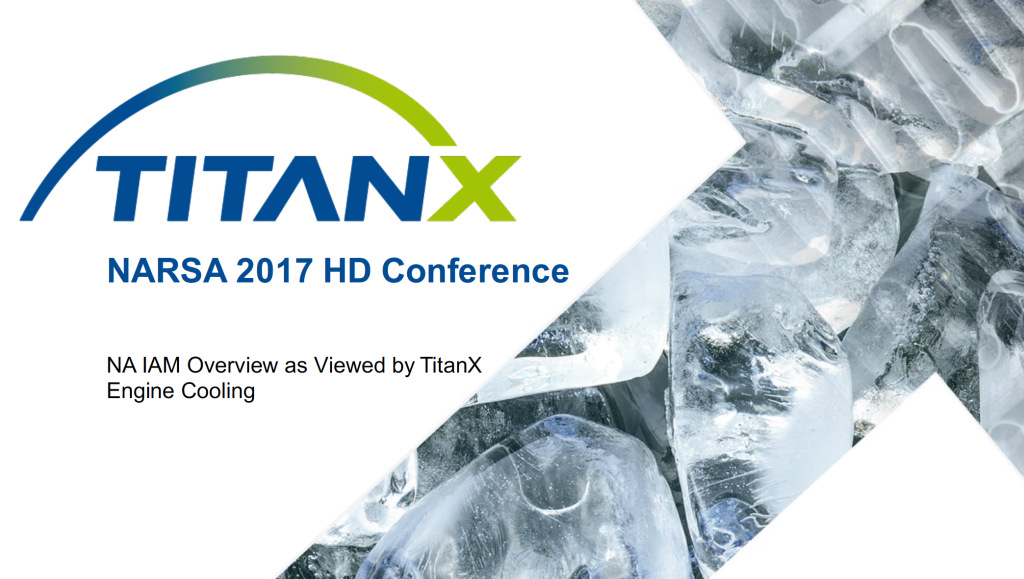
.
Download “Why do Truck OEMs Want a “Cooling System,” Not Just Components?” Here by Frank Perrone, TitanX Director of North American Engineering
A truck, like many complicated pieces of machinery, must be viewed as a system. In other words, a change in one component can impact an associated component or even cause the overall “system” to be “unbalanced.” To insure that an optimum cooling system has been designed for a specific application, the OEM supplier must be able to integrate the performance of each component – radiator, CAC, condenser, oil coolers, fan, fan drive, shroud, and so on – to insure that the truck will perform as it should through a wide range of operating conditions. This is accomplished by using performance simulation tools such as Kuli, which allows the designer to iterate various components in a theoretical environment until an optimal solution is achieved. Once this is done, hardware can be built and placed in an application for real world verification. In the aftermarket environment, it is common to replace an OEM part with a replacement part that is not “tuned” to match the parameters of the OE part. Once this happens, the “system” is no longer “balanced.”
Functionally the component may work, but its effect on Engine Diagnostics, Fan on Time, Air Density at the Intact Manifold, Fuel Economy, Emissions, etc. is not known. During this session, TitanX takes you through a step-by-step process showing how this all works and what happens when the “system” is out-of-whack. Plus, you’ll get a comprehensive presentation on what you need to know about diesel particulate filter technology.
This presentation was originally part of NARSA’s 2016 Heavy Duty Heating and Cooling Conference in St. Louis, Missouri.